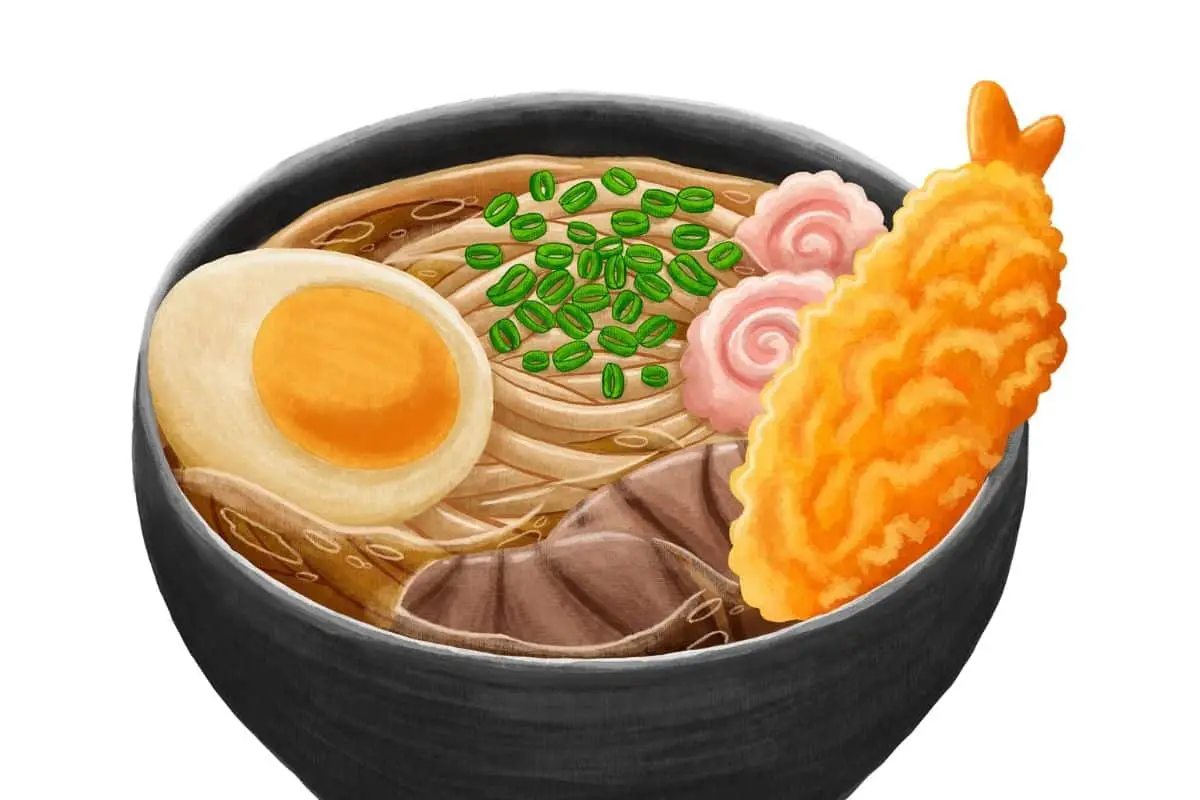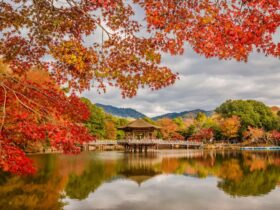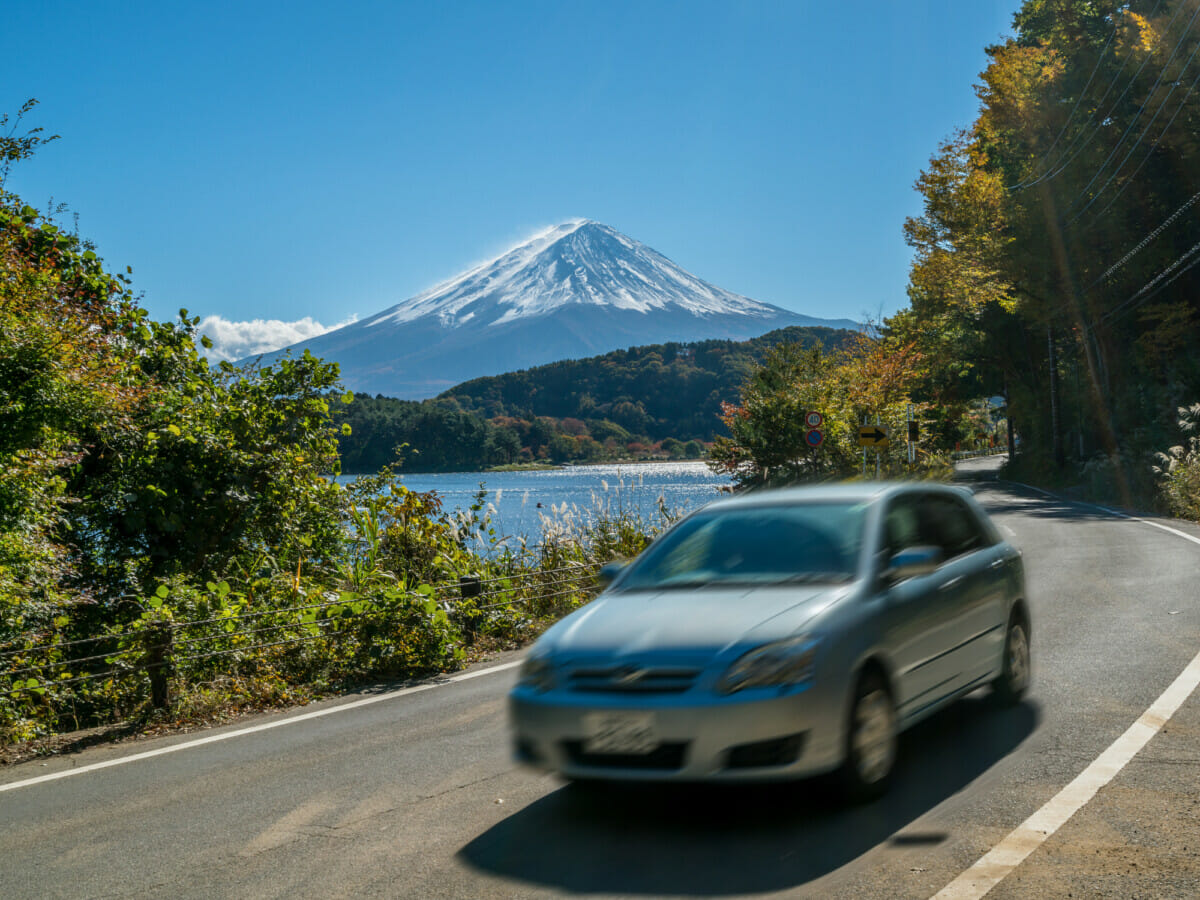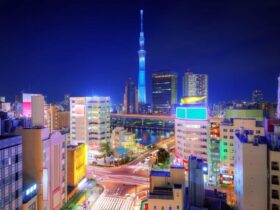Udon noodles are well-known and beloved all over the world, but few people know that there are more than a dozen of udon varieties, types and dishes.
We’ve compiled a comprehensive list of the popular udon varieties and where you should travel if you want to get a taste of these unique varieties.
1. Bukkake Udon
Bukkake is easily found throughout Japan. It’s a simple summer dish. Thick udon noodles are served with cold broth that combines kaeshi (a traditional mixture of soy sauce, mirin, and sugar) with dashi broth.
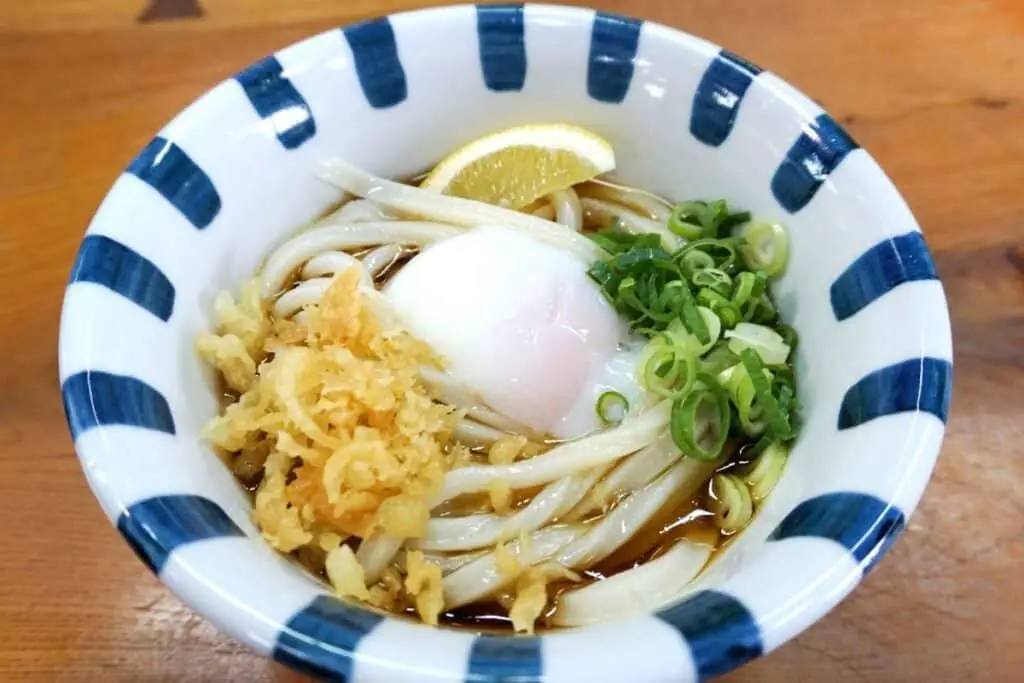
The dish is served with a wide variety of toppings, with green onions being the most popular. Depending on the establishment, other toppings may include boiled/poached egg, natto, ginger, daikon, okra, bonito flakes, and/or tempura.
You can find the dish in most cities across Japan.
2. Gosetsu Udon
Gosetsu Udon is a Hokkaido specialty. The major difference between this and other Udon dishes is the type of noodles themselves – usually, udon is made from wheat flour, but Gosetsu Udon uses potato starch noodles instead. This gives Gosetsu Udon a unique, very chewy texture.
Gosetsu Udon isn’t very popular outside Hokkaido, but you may be able to get a taste in Tokyo as well.
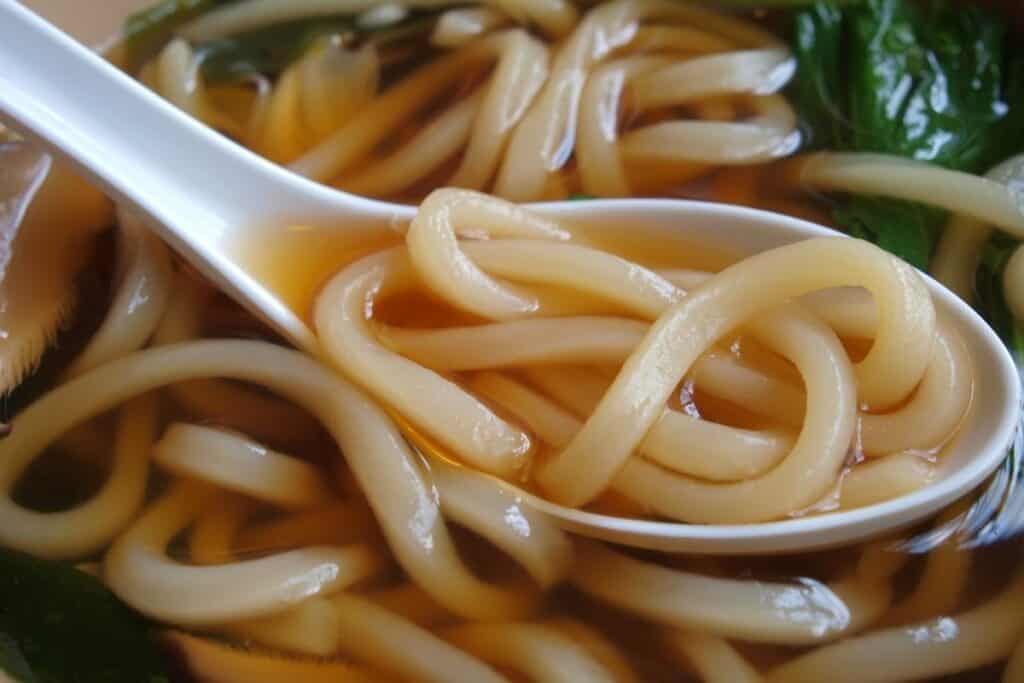
3. Himokawa Udon
Himokawa Udon is probably the most unique-looking of the bunch. It’s a flat and very wide noodle – with some restaurants reaching up to 6 inches in width.
Himokawa udon noodles are very thin and flat, which gives them a more delicate texture than traditional noodles.
They’re a Gunma prefecture specialty and not particularly popular in the rest of the country. In Gunma, they’re enjoyed year-round in a variety of both cold and hot dishes, but a particular favorite seems to be Okkirikomi – a hot savory soup with a bunch of vegetables (that’s also a Gunma specialty)
4. Hippari Udon
Hippari Udon can be roughly translated as “udon pulled from the pot” (hippari means “pulling”).
This is a traditional winter dish from Yamagata prefecture. With winters of Yamagata being quite harsh, dried noodles and preserved foods are a long-standing theme in the prefecture.
Hippari udon is supposed to be hearty and simple. Dried udon is boiled in plain water and simple broth, “pulled” from the pot, and divided into individual bowls, with a special dipping sauce combining natto and/or dried mackerel with the noodles.
5. Inaniwa Udon
As with Himokawa Udon, Inaniwa Udon is rather a type of udon than an independent dish. It’s a more thin variety of noodles, which has a distinct creamy color, smooth texture, and is very light compared to the other udon varieties.
Making it is a painstaking process, as the noodles need to be aged for some time.
Inaniwa udon comes from Akita, but it’s one of the most popular noodle types in Japan and can easily be found in most places, especially in dried form.
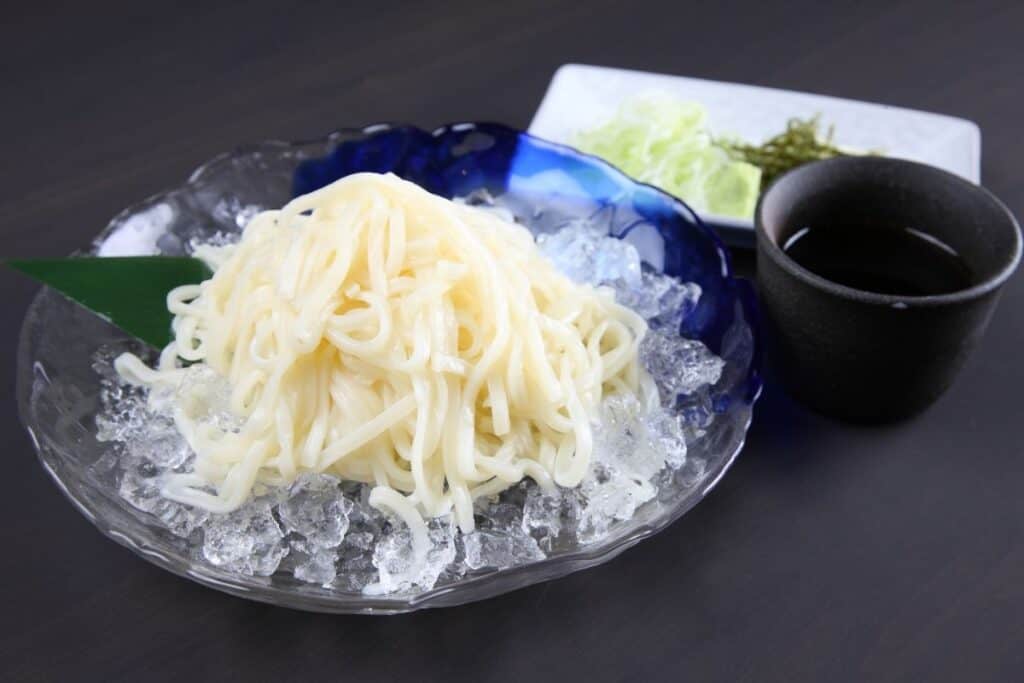
6. Ise Udon
Very thick chewy udon noodles are served with a dark savory soy-based sauce and topped with green onions. This dish is a specialty of Ise city of Mie prefecture, hence the name.
The noodles for this dish are boiled longer than usual. They’re supposed to be slightly mushy on the outside and chewy on the inside.
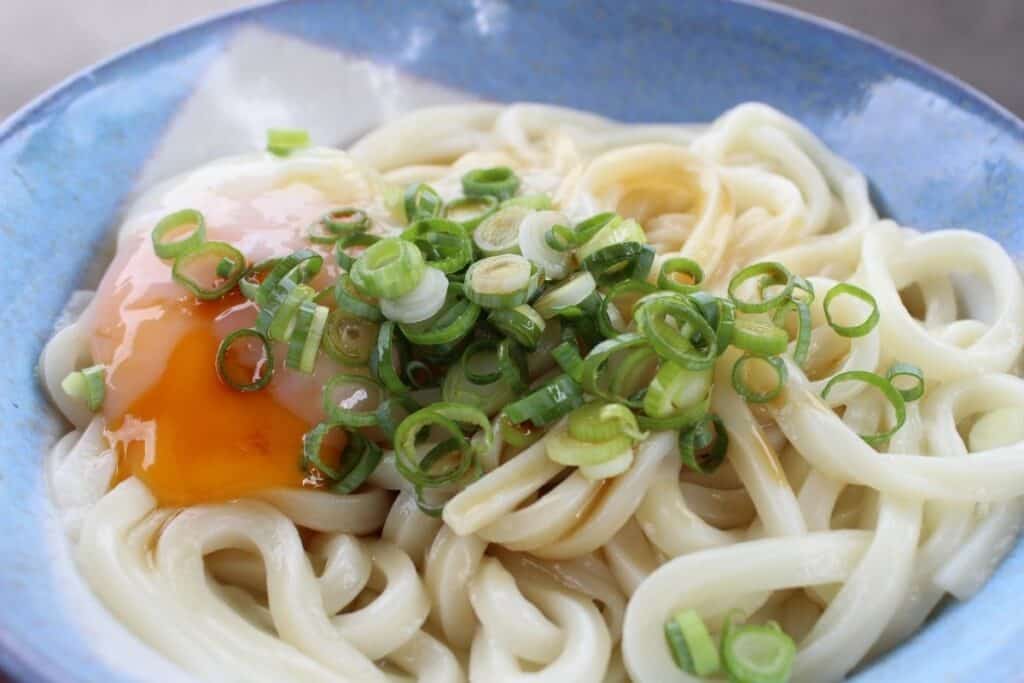
7. Kake Udon
Probably the simplest and most popular of udon dishes. Traditional thick noodles are served in an aromatic broth made with dashi mixed with soy sauce and mirin and topped with green onions.
It can be found in most regions of Japan.
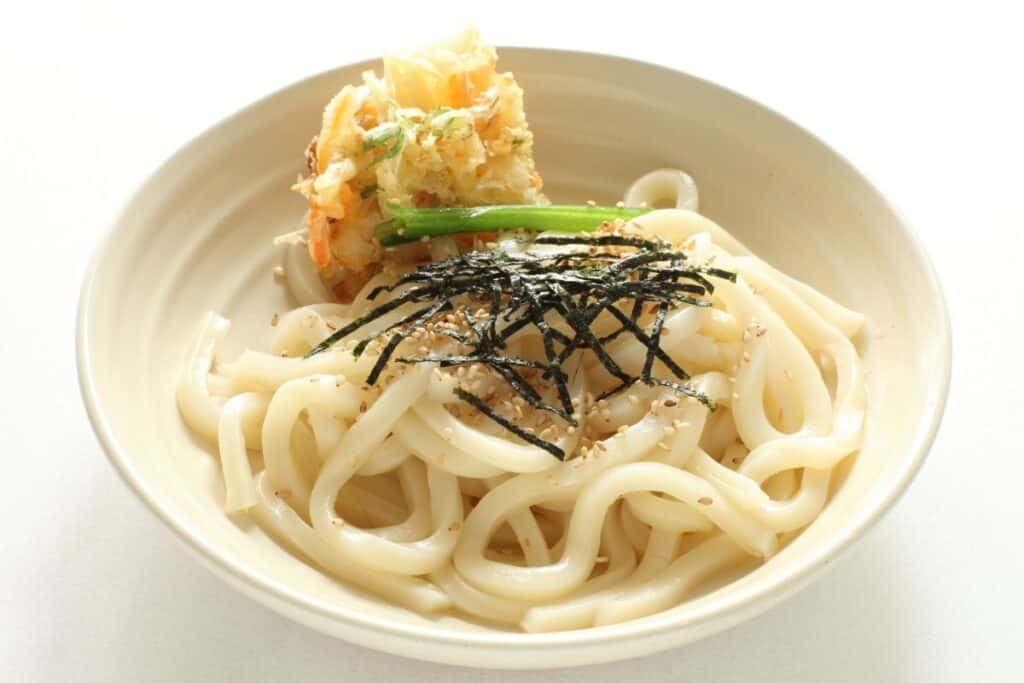
8. Kamaage Udon
Probably the most unique-looking dish you’ll ever taste. Kamaage udon is special due to the way it’s served, not so much for the taste.
The noodles are served in a wooden bowl of hot water and accompanied with a hot dipping sauce on the side (sometimes more than one). You need to fish the noodles out, dip them in the sauce, and then eat them.
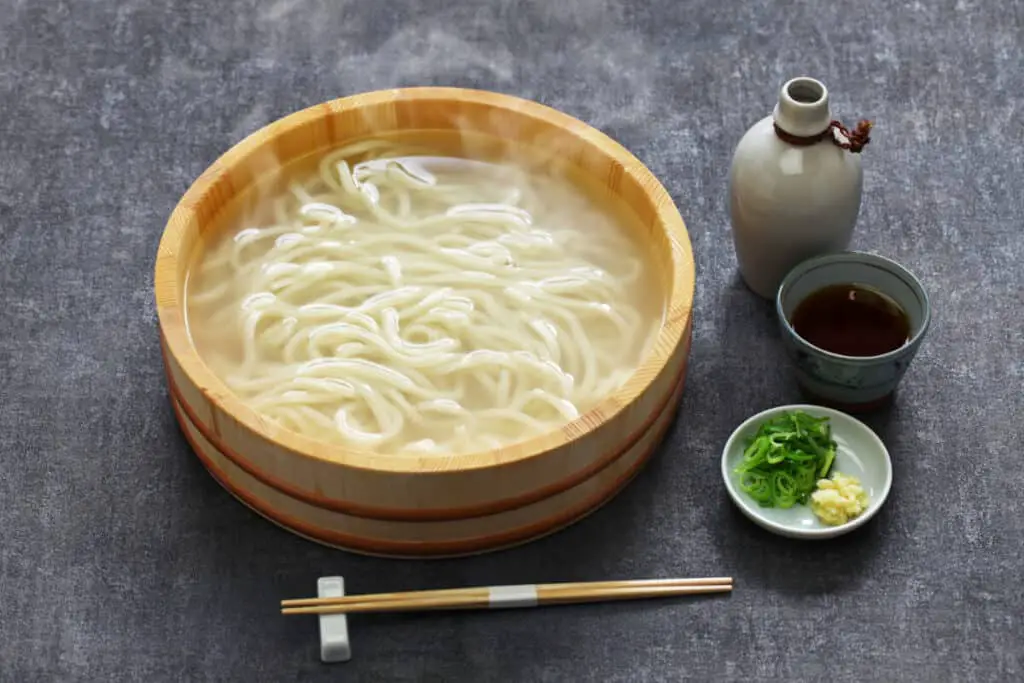
9. Kare Udon
Kare udon or, to be more accurate, Curry udon is… exactly what it says on the box: thick udon noodles served with Japanese curry sauce.
The dish can vary in spiciness and can be very mild or very spicy. A popular topping is shabu shabu meat, which is thought to balance out the curry taste and go well in texture with chewy udon noodles.
It’s a very popular winter dish across Japan.
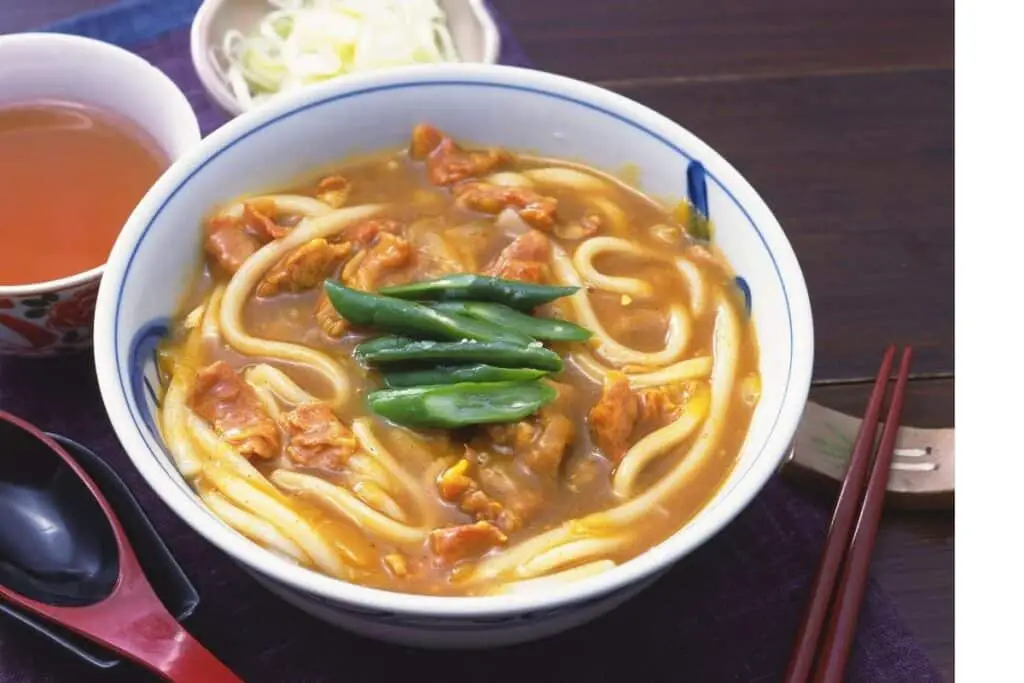
10. Kijoyu Udon
Another simple regional variety, Kijoyu udon is a Kagawa prefecture specialty. This dish is served cold, without broth.
It consists of just 2 ingredients – udon noodles and simple dashi soy sauce. It’s often garnished with green onions.
11. Kishimen Udon
Kishimen is a Nagoya, Aichi prefecture specialty – and has been since the Edo period.
It’s made with thin, flat noodles, somewhat resembling Italian tagliatele and served in a variety of ways, usually in hot flavorful soup with a variety of toppings.
Locals assure that the form of the noodle is paramount because it helps absorb more flavors from the soup.
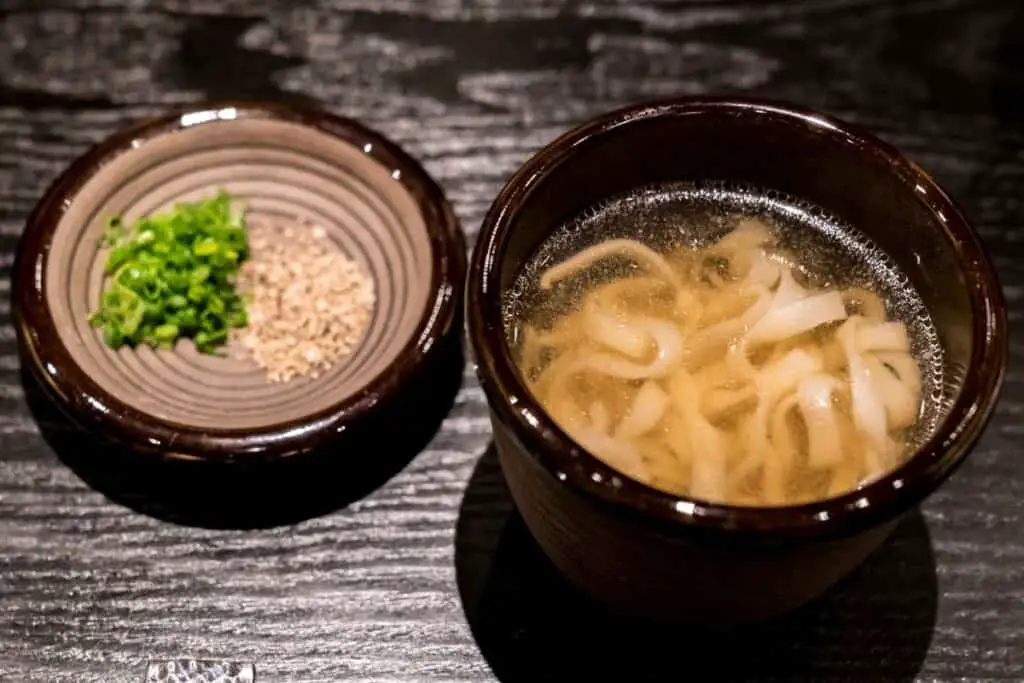
12. Kitsune Udon
Probably the most well-known among udon dishes, Kitsune (fox) udon is Osaka’s signature dish.
It consists of thick udon noodles served in a dashi broth and dopped with aburaage – deep-fried tofu slices.
There’s also a variety called kinchaku kitsune udon – noodles are stuffed inside the large packet of deep-fried tofu. It’s popular in Nara.
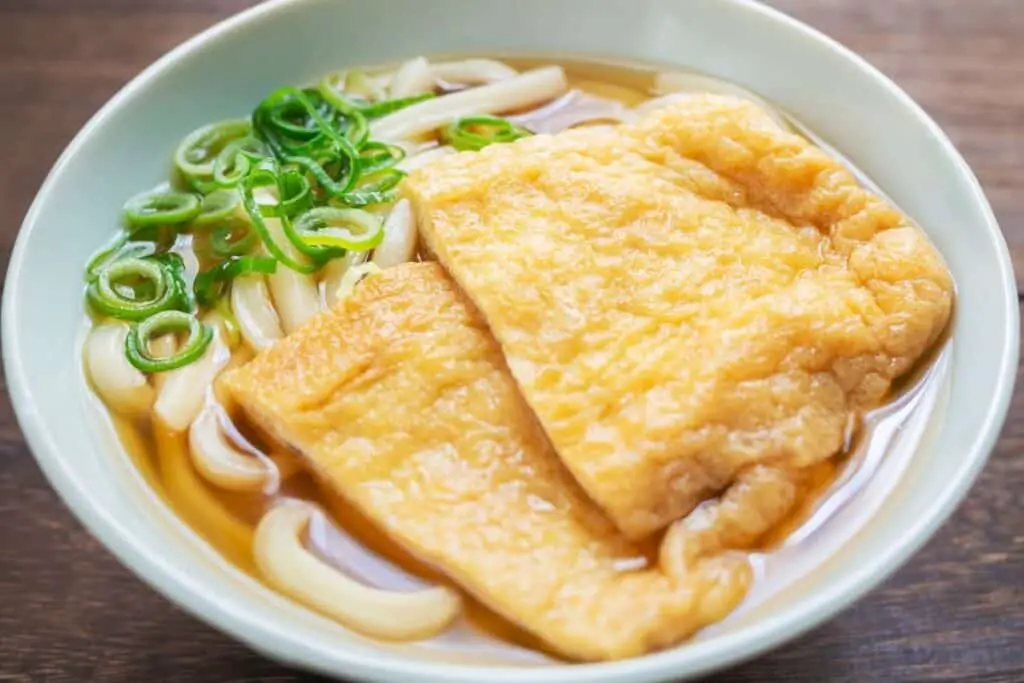
13. Mimi Udon
Mimi udon gets its name due to its unique shape. Instead of long noodles, you get short curved pieces of dough. The name of the dish comes from this shape – they’re thought to resemble ears.
Mimi udon is served in a soy-based sauce with a wide variety of toppings: egg, meat, vegetables. It’s a traditional New Year’s dish in Tochigi prefecture’s Senba area.
14. Miso Nikomi Udon
A popular winter dish in Nagoya, miso nikomi udon is traditionally served in danabe – Japanese earthenware pot.
The dish combines miso and dashi-based broth and a variety of other ingredients – boiled eggs, green onions, shiitake mushrooms, deep-fried tofu, etc. There’s no universal recipe aside from the broth itself being miso-flavored.
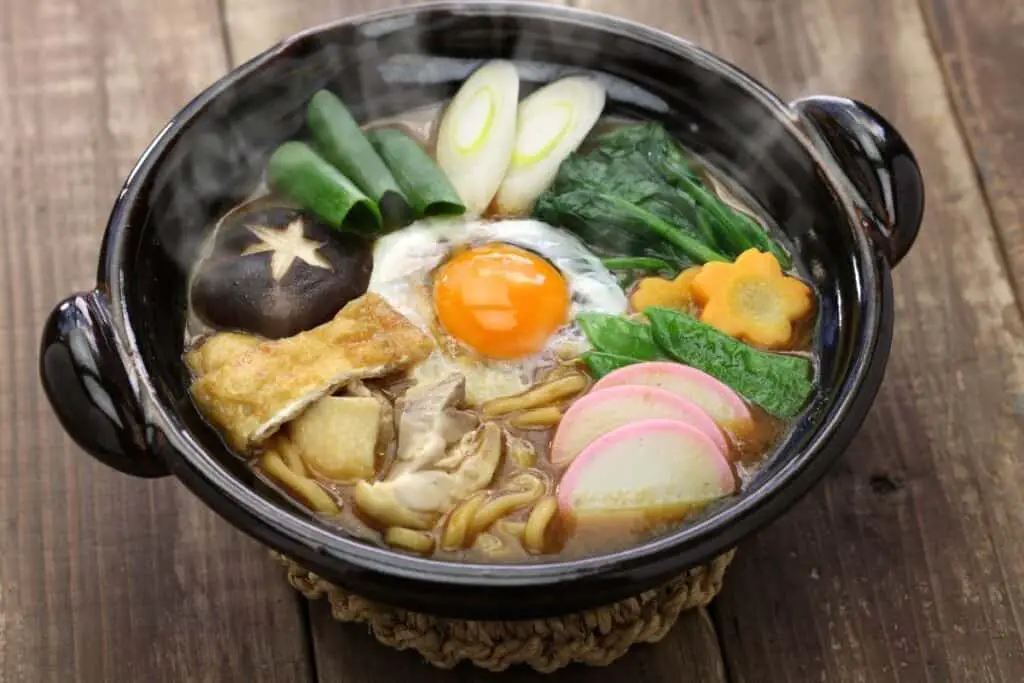
15. Musashino Udon
Musashino udon is made distinct due to its color and flavor – it’s supposed to be slightly brownish, with dark flakes peppered all over, and have a slightly rougher texture than more popular udon noodle varieties.
It’s not very popular, but beloved both for its flavor and history (it’s customarily made only with locally grown wheat).
Musashino udon is versatile and can be served both hot and cold. It’s easiest to find in Tokyo.
16. Nabeyaki Udon
Nabeyaki udon is hearty soup, with noodles and vegetables cooked together in a broth with dashi stock.
Once done, it’s served with a variety of additional toppings, with shrimp tempura being the most popular.
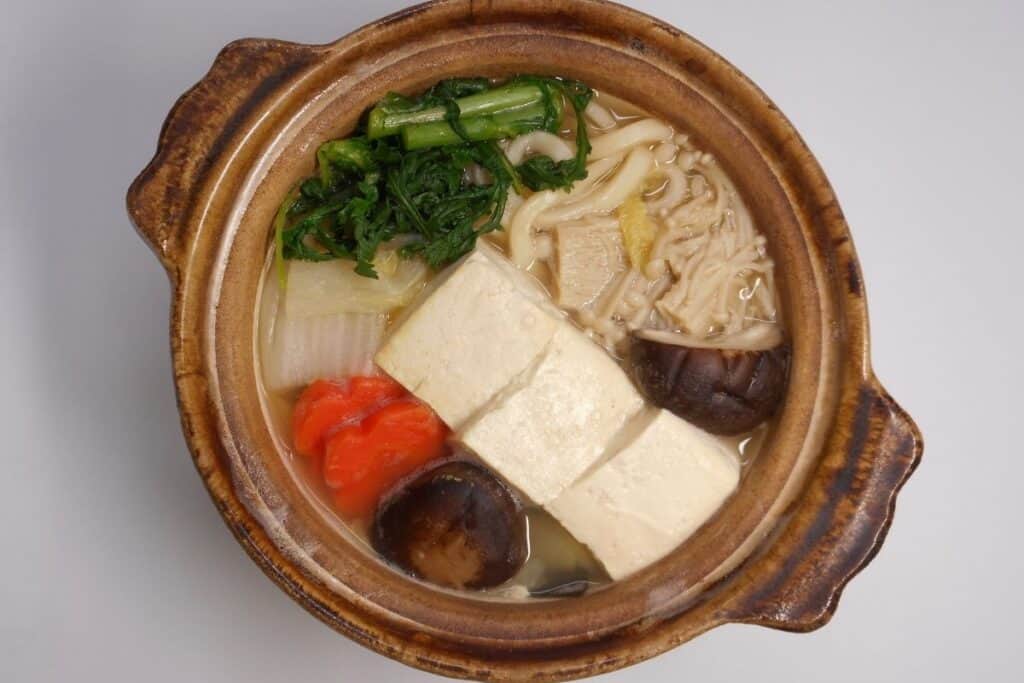
17. Naruchuru Udon
Naruchuru udon is a Tokushima prefecture specialty. It’s handmade, and thus not uncommon for the noodles to be of different lengths and thicknesses.
The noodles are traditionally served in a clear sweet golden broth. The toppings are supposed to be simple and minimal – aburaage, fish cakes, green onions.
18. Sara Udon
This Nagasaki specialty is the first on our list that traditionally comes fried, instead of broth.
Any type of noodle will do – thick or thin – as long as it’s fried to the crispness. Then the dish is topped with fried vegetables and some kind of protein – shrimp, squid, and pork being the most customary.
19. Tempura Udon
Tempura udon resembles many of the other udon varieties from this list – it’s served with dashi stock, seasoned with mirin, soy sauce, and occasionally sugar.
The distinct element of the dish is the tempura toppings, with shrimp being the most popular (though vegetarian varieties are available with vegetable tempura instead of shrimp).
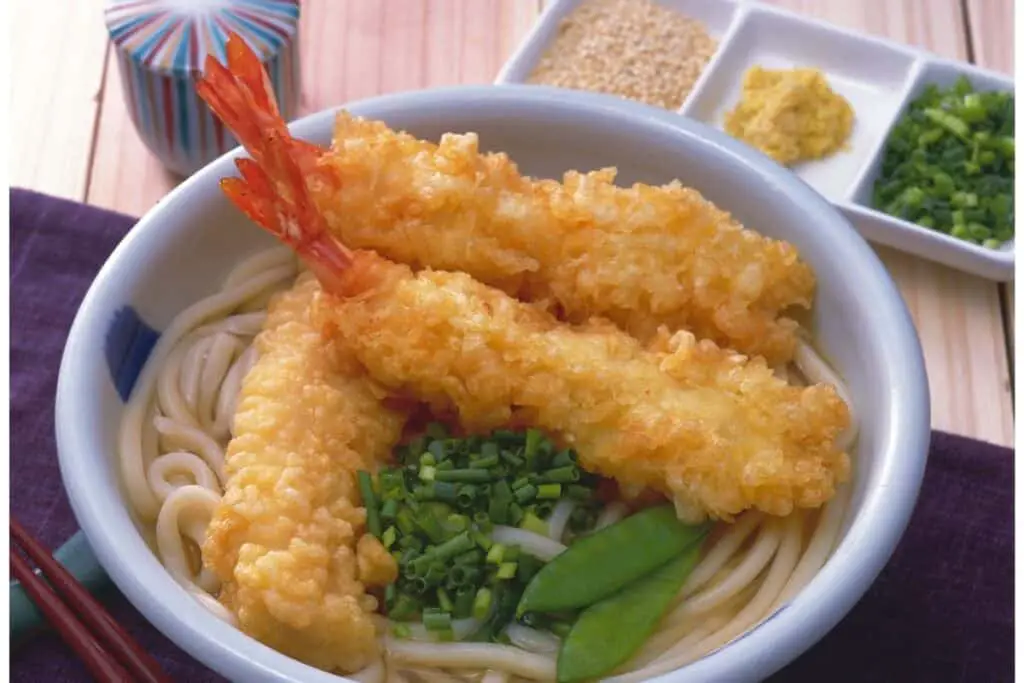
20. Tsukimi Udon
Tsukimi udon resembles tempura udon in that it’s a very traditional base – dashi stock, with mirin, soy sauce, and sugar as flavorings – that gets its distinct name due to a special element.
For tsukimi udon, this special element is a raw egg (though these days it can be poached) that’s added to the dish to represent the harvest moon.
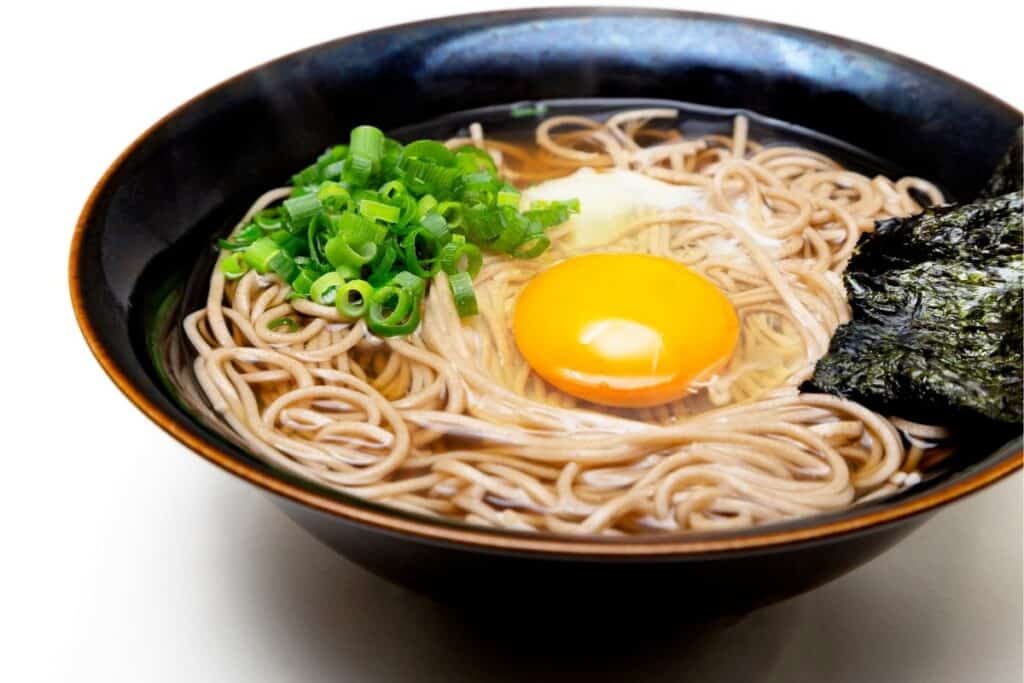
21. Udon-suki
Udon-suki, a Sakai specialty, is a hotpot dish popular in winters. There’s no distinct recipe, rather anything that’s available goes into the pot (and restaurants are free to customize as they like).
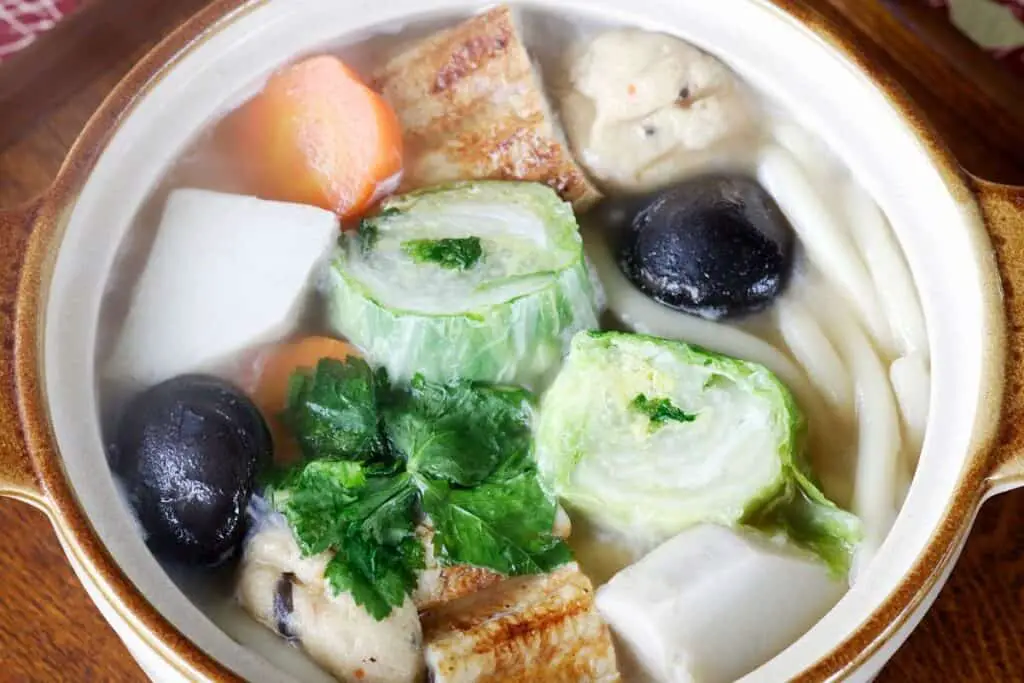
Ingredients may include tofu, chicken, pork, salmon, tiger shrimp, conger eel, squid, Hamaguri clams, shiitake mushrooms, etc.

